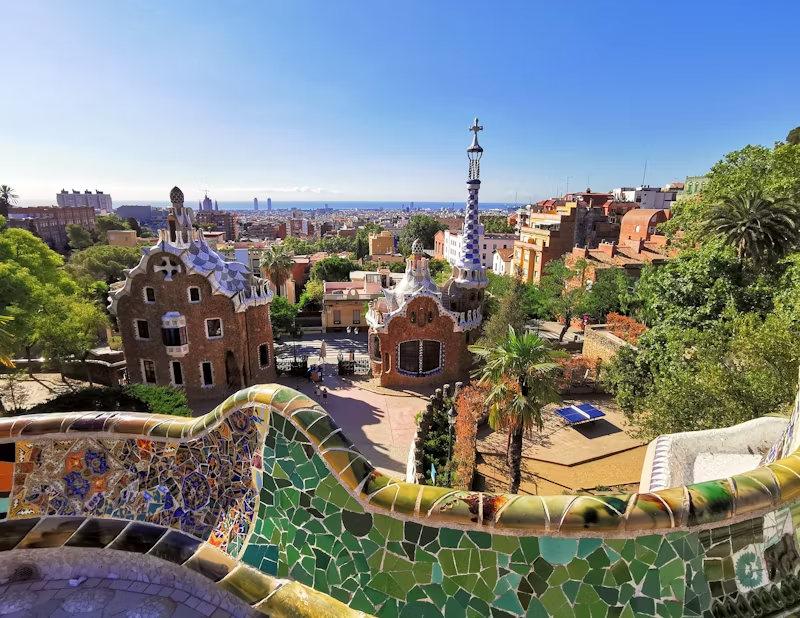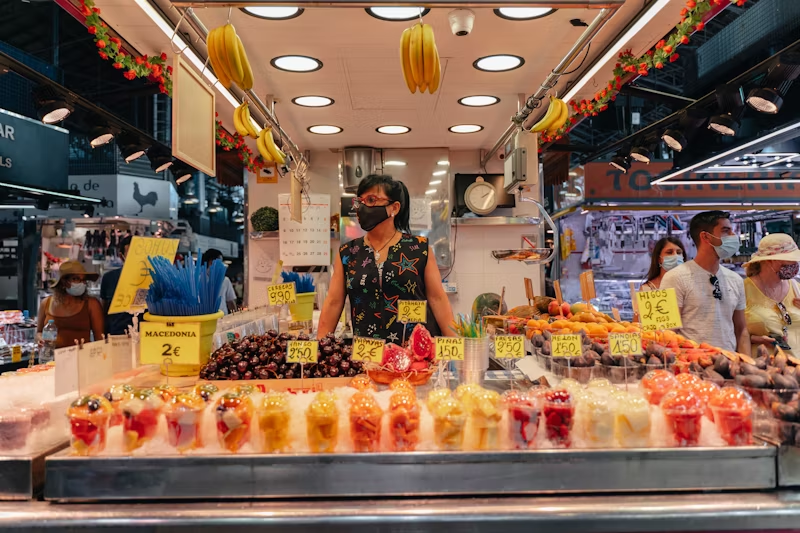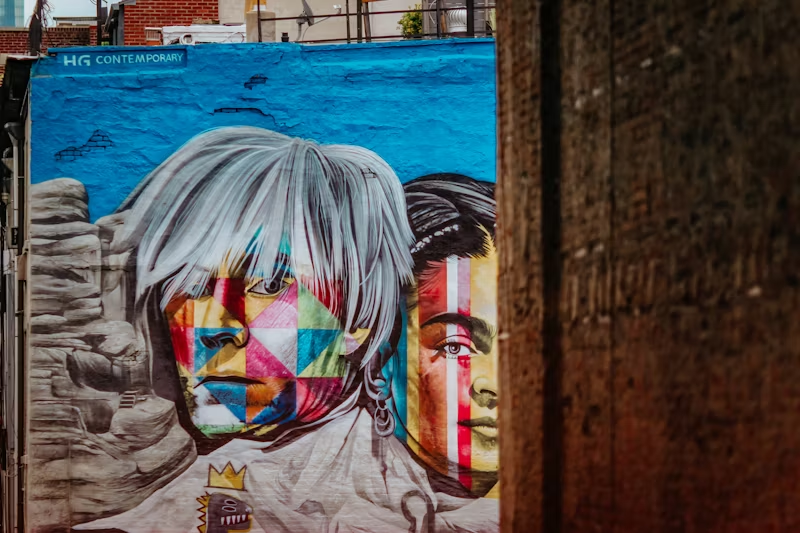Top 10 things to do in Barcelona for a First Visit

Welcome to Barcelona, where the past and present dance together in a vibrant display of culture, art, and life. You're in for a treat for those setting foot in this dynamic city for the first time. Barcelona is not just a place; it's an experience where every corner holds a discovery waiting to enchant you.
From the whimsical masterpieces of Antoni Gaudí to the bustling markets filled with fresh flavors, your journey through Barcelona will be nothing short of magical. Get ready to immerse yourself in Catalonia's heart and discover why visitors repeatedly fall in love with Barcelona.
Consider lightening your load with Barcelona luggage storage to start your Barcelona adventure on the right foot. Why let heavy bags dampen your spirits when figuring out things to do in Barcelona today? Nannybag offers a secure, convenient solution, ensuring you can dive into the Barcelona experience with both hands-free.
Strategically located storage options across the city mean your belongings are never far away, so you can move from the architectural feats of La Sagrada Familia to the vibrant paths of La Rambla without a hitch. Embrace the freedom of traveling light and make every moment in Barcelona count.
Top 10 Things to Do in Barcelona for a First Visit
1. Sagrada Familia
The Sagrada Familia is not just an architectural marvel but a symbol of Barcelona's rich cultural heritage and Antoni Gaudí's ingenuity. This gothical church, a UNESCO World Heritage Site, is a masterpiece under construction since 1882, reflecting Gaudí's profound devotion to his work and innovative approach to Gothic and Art Nouveau forms. The façades, each representing significant biblical scenes, are adorned with intricate sculptures that appear alive before you.
Gaudí's design transcends traditional church architecture, with towering columns branching out like trees to create a forest canopy overhead. The stained-glass windows filter natural light into a spectrum of colors that dance across the interior, creating a serene and otherworldly atmosphere that enchants visitors. Each element, from the sculpted columns to the soaring ceilings, contributes to the narrative Gaudí aimed to tell—a harmonious blend of nature, faith, and architectural genius.
2. Park Güell
Entering Park Güell is like stepping into a fantastical dream. Conceived by Gaudí for Eusebi Güell, this park is a testament to the artist's belief that nature should be integrated into every facet of design. The park is scattered with structures that mimic natural forms, from undulating lizard sculptures to organic columns that seem to grow from the earth.
The main terrace, bordered by a long, serpentine bench covered in colorful mosaics, offers a panoramic view of Barcelona and the sea beyond. It is a perfect spot to reflect and admire the views of the city.
Park Güell was designed as a space where man and nature coexist harmoniously. Its pathways lead visitors through lush gardens and archways, over bridges, and past Gaudí's house, now a museum dedicated to his life and work. This enchanting park showcases Gaudí's unparalleled creativity and serves as a green oasis in the urban landscape, inviting visitors to explore and enjoy its peaceful ambiance.
3. La Rambla
La Rambla is Barcelona's lifeblood, a vibrant artery puling with the city's energy. This iconic boulevard stretches 1.2 kilometers, from the bustling Plaça de Catalunya to the historic waterfront, mirroring the city's dynamic spirit. It's a melting pot of locals and tourists, artists and performers, all converging in a lively display of urban life.
Walking down La Rambla, one can't help but be drawn to La Boqueria, Barcelona's famous market. This culinary haven boasts stalls overflowing with fresh fruits, vegetables, meats, seafood, and sweets. It's an ideal place to savor local dishes, from jamón ibérico to fresh seafood tapas, and to soak in the vibrant atmosphere that defines Barcelona's market culture.
La Rambla also serves as a gateway to many of the city's historic neighborhoods, including the Gothic Quarter and El Raval. Each offers its unique blend of shops, cafes, and historic sites. With its human statues, flower stalls, and lively terraces, this boulevard captures the essence of Barcelona's charm, making it a must-visit destination for anyone wanting to experience the city's heart.
4. Gothic Quarter (Barri Gòtic)
The Gothic Quarter is Barcelona's historical heart, where the shadowy lanes weave a tapestry of medieval history mixed with modern vitality. This area is a treasure trove of Gothic architecture, with its cathedrals, palaces, and plazas echoing the stories of Barcelona's medieval past. Walking through its alleys, you'll stumble upon hidden gems at every turn—from secluded courtyards to ancient Roman relics.
The Barcelona Cathedral, or Catedral de la Santa Cruz y Santa Eulalia, is the crown jewel of the Gothic Quarter. This imposing structure features a stunning façade adorned with gargoyles and Gothic spires. Inside, its grandiose nave is illuminated by magnificent stained-glass windows. The cathedral's cloister, home to a flock of geese, offers a serene escape from the bustling streets.
Exploring the Gothic Quarter is also a journey through layers of history, where remnants of Roman walls stand alongside medieval buildings. Each corner tells a story, inviting visitors to lose themselves in the narratives of centuries past, making it an essential experience for history enthusiasts and curious travelers alike.

5. La Boqueria
La Boqueria, or Mercat de Sant Josep de la Boqueria, is not just a market; it's a cultural institution and a gastronomic paradise. Located off La Rambla, it's a pulsating hub of activity where locals and tourists converge to experience the richness of Catalan cuisine and produce. The market's origins can be traced back to the 13th century, which has evolved into the bustling mosaic of stalls seen today.
Inside, the air is filled with the aromas of fresh produce, seafood, meats, and sweets. Each stall is a kaleidoscope of colors, from the vibrant fruits and vegetables to the varied hues of artisanal chocolates and candies. Food enthusiasts can delve into culinary exploration, tasting traditional Catalan dishes, exotic fruits, and freshly prepared tapas, making it an unforgettable sensory journey.
6. Casa Batlló
Casa Batlló, one of Antoni Gaudí's masterpieces, is a testament to his visionary genius and the enchanting allure of Modernisme. Located on Passeig de Gràcia, this architectural marvel captivates with its fantastical façade, often interpreted as representing the legend of Saint George and the dragon. The building's exterior, with its undulating shapes and colorful mosaic, mimics the fluidity and dynamism of the natural world.
Venturing inside Casa Batlló, visitors enter a realm where architecture dissolves into sculpture and function fuses with fantasy. The interior celebrates light and color, with spaces designed to evoke the feeling of being under the sea—a testament to Gaudí's ability to draw inspiration from nature's forms and rhythms. The noble floor, with its iconic mushroom-shaped fireplace, and the loft, characterized by its skeletal arches, highlight this immersive experience.
7. Casa Milà (La Pedrera)
Casa Milà, affectionately known as La Pedrera ("The Stone Quarry"), is one of Antoni Gaudí’s most intriguing residential creations. Situated a mere stroll away from Casa Batlló, this architectural gem breaks from conventional forms with its undulating stone facade, which mimics the sea's rolling waves, and its wrought iron balconies swirling like vines. This building exemplifies Gaudí's naturalistic design, integrating organic motifs into a functional living space.
The rooftop of Casa Milà is a surreal landscape, populated by chimney stacks transformed into sculptural masterpieces. These whimsical forms are artistic expressions and serve practical ventilation purposes, showcasing Gaudí's ability to marry form and function with creativity. The rooftop also offers breathtaking views of Barcelona, providing a unique vantage point to appreciate the city’s skyline and the architect’s masterful integration of natural inspirations.
8. Santa Maria del Mar
Nestled in the vibrant Born district, Santa Maria del Mar is an architectural jewel of Catalan Gothic style, offering a stark contrast to the Modernisme for which Barcelona is also famous. Constructed in the 14th century, this basilica is celebrated for its harmonious proportions and the clarity of its interior space, characterized by towering columns and a majestic ribbed vault. The simplicity of its design, free from the elaborate ornamentation typical of Gothic structures, emphasizes the beauty of its form and the play of light within its walls.

9. MOCO Museum
The MOCO Museum (Museum of Contemporary Art) presents a dynamic foray into modern and contemporary art within the historic setting of Barcelona. This museum celebrates the innovative and sometimes provocative works of 20th and 21st-century artists, from pioneering figures to emerging talents. The collection includes pieces by iconic artists such as Banksy, Andy Warhol, and Jean-Michel Basquiat, providing a comprehensive overview of the movements shaping the contemporary art scene.
With its rotating exhibitions, the MOCO Museum ensures visitors a fresh and engaging experience, continually presenting new themes and perspectives on the art of our times. It's a vibrant cultural space that encourages dialogue and reflection on the societal, political, and personal narratives conveyed through modern art.
Each destination contributes to Barcelona's rich cultural tapestry, offering visitors a journey through the city’s architectural splendor, historical depth, and artistic innovation. From Gaudí’s imaginative creations to the serene beauty of Gothic architecture and the contemporary expressions at MOCO Museum, Barcelona remains an ever-evolving showcase of human creativity.
10. Palau de la Música Catalana
The Palau de la Música Catalana, a masterpiece of Catalan Modernisme, stands as a testament to the brilliance of architect Lluís Domènech I Montaner. This concert hall declared a UNESCO World Heritage Site, is an explosion of color, light, and form, with every inch adorned with intricate mosaics, sculpted figures, and floral motifs. The auditorium is crowned by a stunning stained-glass skylight, which bathes the space in a warm, natural glow, enhancing the acoustics and creating an ethereal atmosphere for performances.

Say hello to exploring and goodbye to heavy bags!
What if you could enjoy every minute in the city without the burden of your bags?
- Safe luggage storage for a flat daily price of 4,50 €/luggage item
- Included luggage protection of up to €10000 in case of breakage, loss or theft
